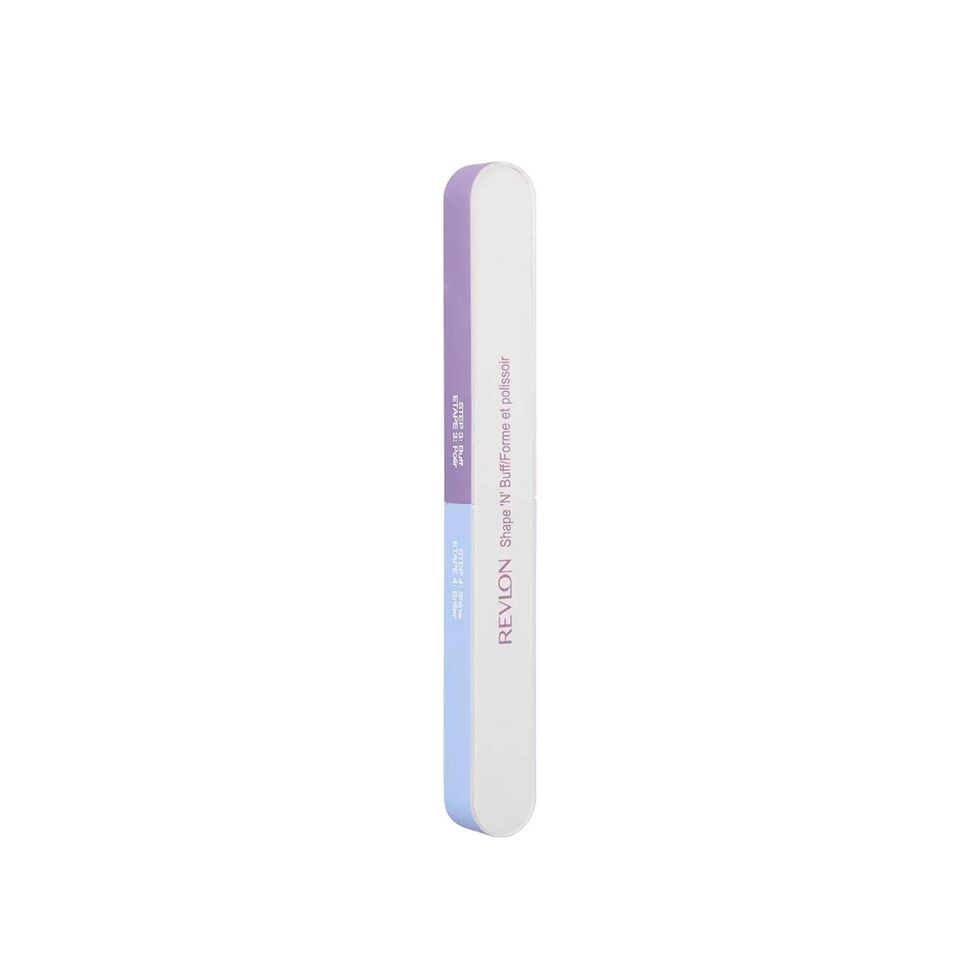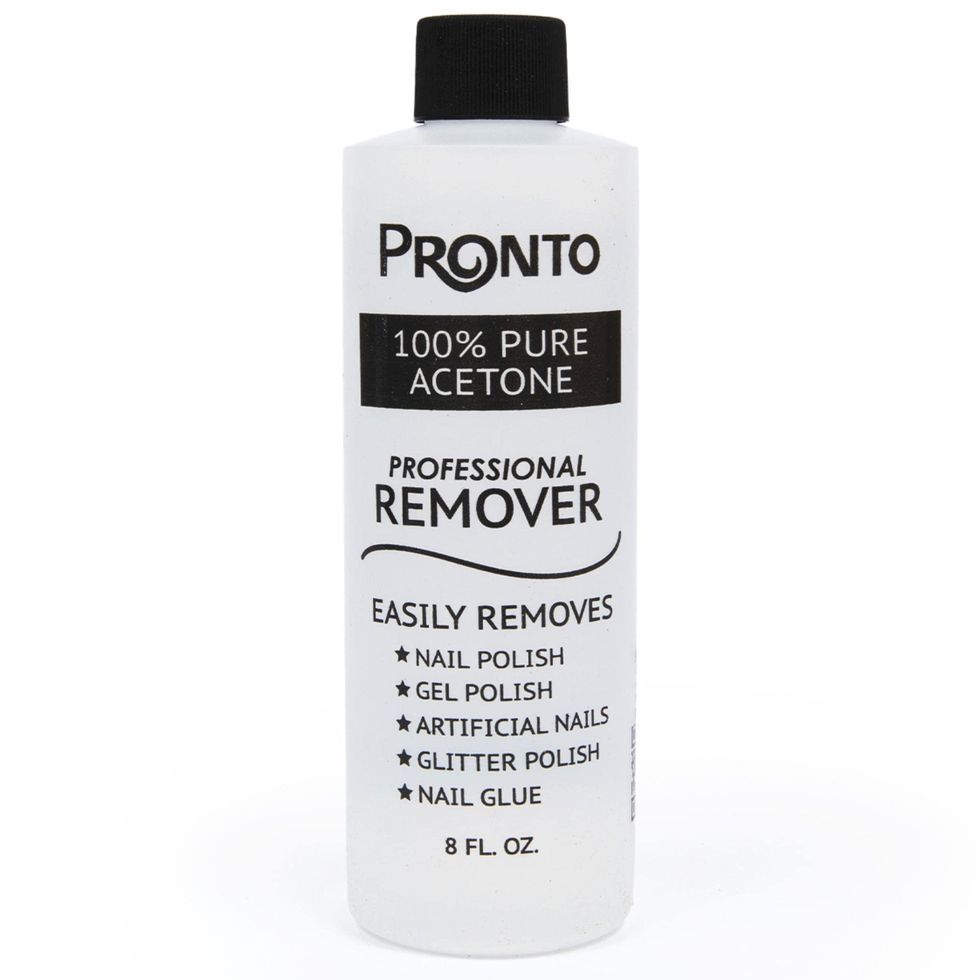Dip nails are a real treat, especially considering that most dip powder manicures last three to four weeks. However, when the inevitable day arises, and your dip powder nails have grown out, leaving you in need of their removal, you may wonder, how exactly? Dip powder nails are made of several layers of finely-milled powder, so they aren’t the easiest to remove, especially if you’re attempting it yourself at home. Understanding the proper removal process is essential, as improper dip removal can potentially damage the natural nail bed and cause lasting harm.
Because the thing is, it’s not dip nails themselves that are harmful; it’s improper removal. So before you start picking at your nails, take a moment to read the information below. We consulted four nail experts to discuss the benefits of dip powder nails, how to safely remove them at home, and share their favorite tools.
What are the benefits of dip powder nails?
Not only do dip nails look great, but “Dip offers longer-lasting and more durable results compared to traditional nail polish and can be soaked off using acetone,” according to nail expert Mazz Hanna. If you’re too impatient to wait for your nails to dry properly at the salon, dip nails are a great alternative to traditional nail polish. I’ve personally ruined my manicures five minutes after leaving the salon too many times to ever opt for regular polish again.
If you have weak or brittle nails, dip manicures also have the advantage of “adding strength to weak nails, whether you’re looking to grow them out or not,” says nail artist Karleigh Morgan. And if you already have long nails, dip helps you maintain that length without breaking as easily compared to gel polish.
What happens if you don’t remove powder dip nails properly?
In an ideal world, everyone would visit the salon for proper dip or gel removal every time, but that’s rarely the case. Even as a beauty editor who should know better, I find myself picking at my gel or dip nails in the shower, only to end up ruining them for weeks to come (I blame anxiety).
It’s crucial not to force the product off and to ensure that the acetone has thoroughly softened the product as much as possible. “If you forcibly remove dip, it will damage and weaken your natural nails,” warns Hanna. Because dip is a thick product, improper removal can be equally detrimental as peeling off acrylics.
What are the steps to removing dip powder nails at the salon?
Depending on the salon you go to, your nail technician, as described by nail artist Sonya Meesh, will either hand file or use an e-file to remove the initial layers of dip. They will then soak cotton in acetone and wrap each finger with aluminum foil to prevent the acetone from evaporating. Alternatively, they might place your hand in a bowl of acetone, or in cases where they are trained, they might use an e-file to remove all of the product without acetone. After allowing the nails to sit in acetone for approximately 15 minutes, they remove the foil. According to Morgan, sometimes the dip completely comes off on the cotton ball, and other times they may need to do some filing because the dip “turns into a mushy substance that balls up and comes off when filed.”
Remember that not all nail artists are experienced with dip nails, so choosing a salon where your nail technician is properly trained in safely removing dip is essential.
What are the steps to removing dip powder nails at home safely?
If you don’t have the time or simply don’t want to incur the added $5-15 dip removal fee at the salon, you can safely remove dip powder nails at home. The key, as advised by Hanna, is to use the grittier side of a high-quality file (such as this wide-bodied one from ORLY) to eliminate the top layer of the product. Next, prepare a ceramic or stainless steel bowl with about one inch (or enough to submerge the nails) of acetone. Massage a barrier cream or cuticle oil into the cuticles and soak the nails in acetone. Expect the process to take around 20 minutes to remove the dip product from the nails. Using a wooden cuticle stick, gently scrape away the product. If there is any residual product, soak for another three to five minutes and repeat the process. As nail artist Morgan Dixon suggests, it’s also beneficial to have a nail buffer handy after the soak to polish off any remaining products left on the nails.
Alternatively, if you prefer not to immerse your hands in acetone, another option, according to Morgan, is to file the topcoat off and use cotton balls soaked with acetone. Wrap your fingernails with pieces of foil and take this time to enjoy watching a TV show (20-25 minutes for the easiest removal). The dip should come off easily when you pull the foils off, but be sure to tightly squeeze the foil when pulling. “I use 711 Reynolds’s Wrap foil; I’ve tried other brands, and they tend to rip easily when wrapping your nails! And these are pre-cut, which makes them easy to work with!” she explains.
When it comes to acetone, Dixon strongly recommends using 100 percent acetone (like this one from Pronto) to soak your nails, as it is the best option for the quickest removal. “Many clients make the mistake of using non-acetone polish remover at home,” she emphasizes. Meesh also cautions, “Please do not use the ‘magic’ quick gel polish remover people are buying on Amazon; there’s no ingredient list for them.”
As for aftercare, “Be sure to hydrate your cuticles afterward since they were exposed to acetone,” advises Morgan. She recommends massaging a cream like Manacurist Rose Baume into your hands and cuticles before and after soaking in acetone.
Can you remove dip powder without acetone?
Google “dip powder without acetone” and at home remedies utilizing baking soda, toothpaste, vinegar, and other household items will pop up. Nevertheless, according to our nail artists and their recommendations, acetone is still the best option to effectively remove dip powder.
Meet the Experts
Mazz Hanna, Founder of Mazz Hanna and nail expert.
Karleigh Morgan, nail artist.
Sonya Meesh, nail artist.
Why Trust ELLE Beauty?
As a leading publisher of fashion, lifestyle, and beauty content, ELLE.com is committed to highlighting the best products in various categories by personally testing the latest and most innovative products, interviewing countless experts, and vetting customer-loved items.
Iman Balagam is a freelance writer who has been in the beauty industry for nearly five years. She has written for and contributed to top women’s magazines and digital brands such as Harper’s BAZAAR, Allure, Byrdie, Elle and more. She will try *nearly* anything and spends a lot of time looking for new ways to store her beauty products in a small New York apartment.


